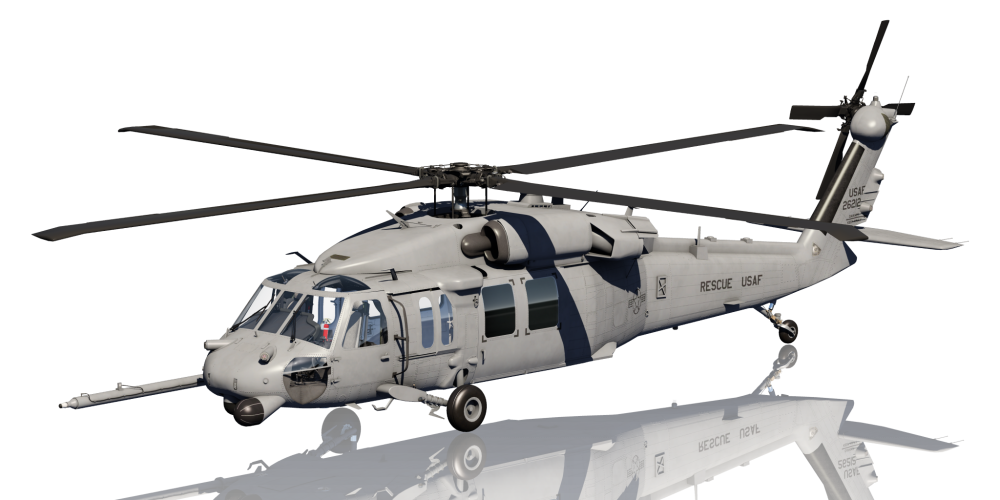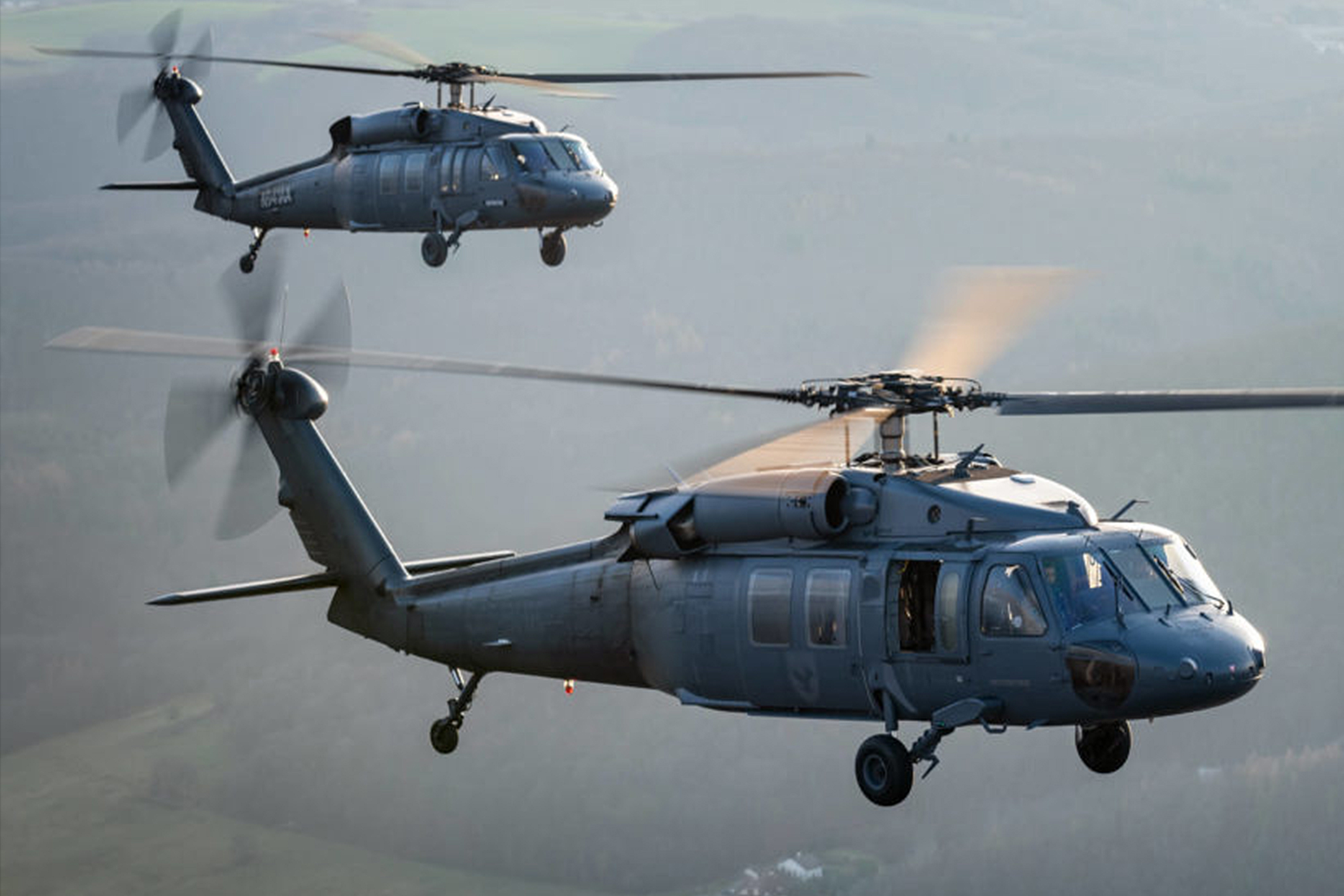Checking out the Adaptability of the UH 60 in Numerous Armed Forces and Private Functions
Checking out the Adaptability of the UH 60 in Numerous Armed Forces and Private Functions
Blog Article
UH-60: Developments in Modern Helicopter Design
The UH-60 helicopter stands as a benchmark in modern-day air travel, showcasing considerable developments in design and modern technology that accommodate the developing demands of army procedures. Its consolidation of advanced products not only enhances efficiency yet additionally addresses essential safety and security worries. The assimilation of advanced avionics has changed functional abilities, allowing for greater situational recognition and decision-making efficiency. As we discover the advancement and crucial advancements of the UH-60, it becomes vital to consider how these developments influence not only existing applications but likewise the future landscape of helicopter design.

Development of the UH-60
The evolution of the UH-60 Black Hawk helicopter represents a significant turning point in aerospace engineering and armed forces aviation. Introduced in the late 1970s, the UH-60 was developed by Sikorsky Aircraft to meet the United States Military's need for a functional energy helicopter efficient in executing a range of objectives. Its style stressed longevity, ability to move, and speed, setting brand-new standards for functional efficiency.
The UH-60 includes an unique four-blade blades system, which improves lift and security, permitting it to operate successfully in varied environments. Its airframe is created from advanced composite products, adding to a decrease in weight while preserving structural stability. The helicopter's layout additionally incorporates improved the rules of aerodynamics, which improves gas efficiency and raises variety.
For many years, the Black Hawk has gone through numerous upgrades to enhance its capabilities, consisting of enhanced engines, progressed trip control systems, and modular systems for easy upkeep and versatility. The helicopter's capability to perform goals ranging from army transport to clinical emptying has strengthened its function as a foundation of united state army procedures. The UH-60 Black Hawk remains an archetype of just how technology in helicopter style can considerably affect armed forces effectiveness and functional adaptability.
Advanced Avionics Equipments
Innovations in avionics systems have actually transformed the capabilities of contemporary helicopters like the UH-60 Black Hawk, enhancing operational performance and situational recognition (UH 60). The combination of innovative avionics enables for boosted communication, navigating, and trip monitoring, making the UH-60 much more versatile in varied objective profiles
Among the vital functions is the sophisticated digital cockpit, which employs multifunction display screens that give real-time information, guaranteeing pilots have prompt access to crucial trip info. This streamlining of information minimizes pilot work and improves decision-making procedures during complex procedures. Furthermore, the consolidation of general practitioner and inertial navigating systems allows precise positioning and course planning, improving objective execution in tough environments.
Furthermore, advanced avionics systems improve interaction abilities through protected data web links and voice communication systems, enabling smooth sychronisation with ground pressures and various other aircraft. The integration of automatic flight control systems better adds to enhanced stability and control, specifically in unfavorable weather or during low-altitude maneuvers.
Engine and Efficiency Enhancements
Engine efficiency in modern helicopters has taken a substantial jump onward, driven by innovations that increase integrity, power, and efficiency. At the forefront of these developments is the fostering of more effective turboshaft engines, specifically those employing sophisticated materials and innovations that enable greater temperature level resistances and boosted thrust abilities. The UH-60 Black Hawk, for example, uses the blog T700-GE-701C engine, which includes a dual-channel, full-authority electronic engine control system. This system improves performance while maximizing fuel consumption and decreasing upkeep demands.
Moreover, the assimilation of engine wellness tracking systems permits real-time diagnostics and anticipating upkeep, considerably boosting operational integrity. These systems not only sharp crews to prospective concerns before they come to be crucial however additionally facilitate a lot more reliable upkeep scheduling, thereby minimizing downtime.

Products and Structural Innovations
Recent growths in materials and structural layout have reinvented contemporary helicopter construction, enhancing both efficiency and durability. The intro of sophisticated composite materials, such as carbon fiber strengthened polymers, has substantially minimized weight while preserving architectural integrity. This change not just improves gas efficiency yet also enhances payload capacity, allowing helicopters like the UH-60 to perform even more varied goals.
Additionally, technologies in aluminum alloys and titanium elements have added to improved resistance to rust and exhaustion, extending the life-span of essential airframe aspects. The critical use these materials has resulted in a decrease in upkeep needs and boosted general functional preparedness.

Additionally, the assimilation of computer-aided style (CAD) and additive production technologies has made it possible for extra complex geometries and lightweight structures, enhancing the aerodynamic performance of helicopter layouts. These innovations facilitate quick prototyping and manufacturing, permitting producers to react swiftly to developing objective needs.
Security and Survivability Attributes
Safety and survivability attributes in modern helicopter design have ended up being vital, mirroring the increasing needs for More Bonuses goal effectiveness in difficult environments. The UH-60 Black Hawk, a remarkable example, incorporates advanced innovations to enhance crew and traveler security.
The helicopter additionally utilizes a ballistic protection system, which consists of armored staff seats and vital systems securing, minimizing vulnerability to little arms fire and shrapnel. Boosted situational awareness is attained through innovative avionics and sensing unit modern technologies, enabling pilots to identify and avoid risks properly.
Furthermore, the integration of redundancy in important systems-- such as dual engines and numerous flight control channels-- ensures continued operation also if one system fails. The UH-60 is outfitted with innovative emergency situation flotation tools, improving survivability in water landings. Collectively, these features not only improve the safety of employees but likewise enhance mission success prices in hostile environments, showing the dedication to excellence in helicopter layout.
Conclusion
The UH-60 helicopter stands for a considerable innovation in modern air travel innovation, incorporating cutting-edge products, innovative avionics, and durable safety functions. Generally, the UH-60 serves as a benchmark for future advancements in helicopter design, symbolizing durability and convenience in modern armed forces operations.
The UH-60 helicopter stands as a criteria in modern aviation, showcasing considerable innovations in design and innovation that provide to the evolving demands of armed forces procedures. As we explore the evolution and key innovations of the UH-60, it becomes important to consider how these growths affect not just present applications but also the future landscape of helicopter layout.
Presented in the late 1970s, the UH-60 was created by Sikorsky Aircraft to meet the United States Military's requirement for a versatile energy helicopter qualified of doing a range of missions. The UH-60 Black Hawk continues to be a prime instance of how development in helicopter design can significantly influence armed forces effectiveness and functional versatility.
Overall, the UH-60 offers as a criteria for future growths in helicopter style, embodying strength and adaptability in contemporary additional info armed forces procedures.
Report this page